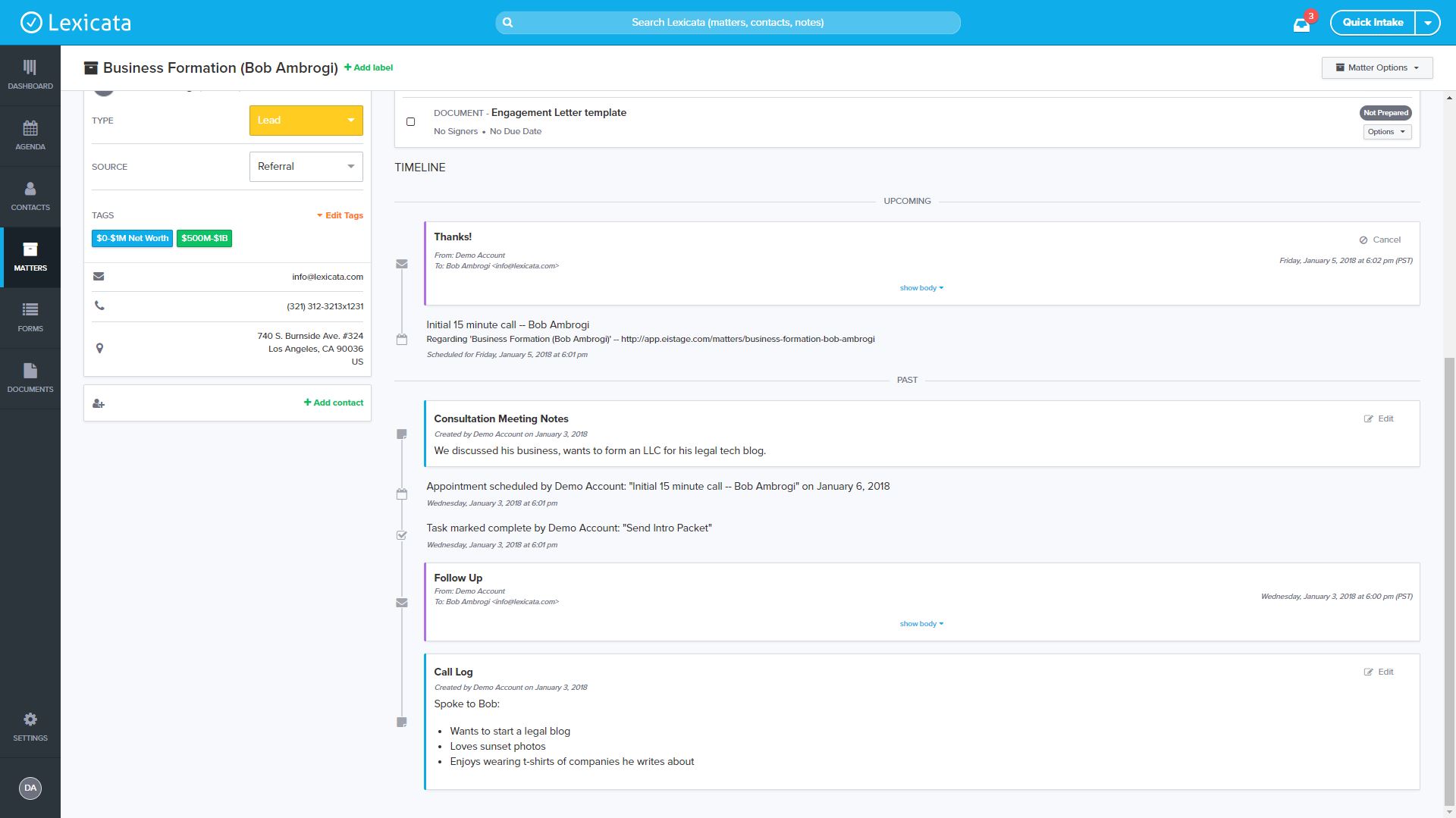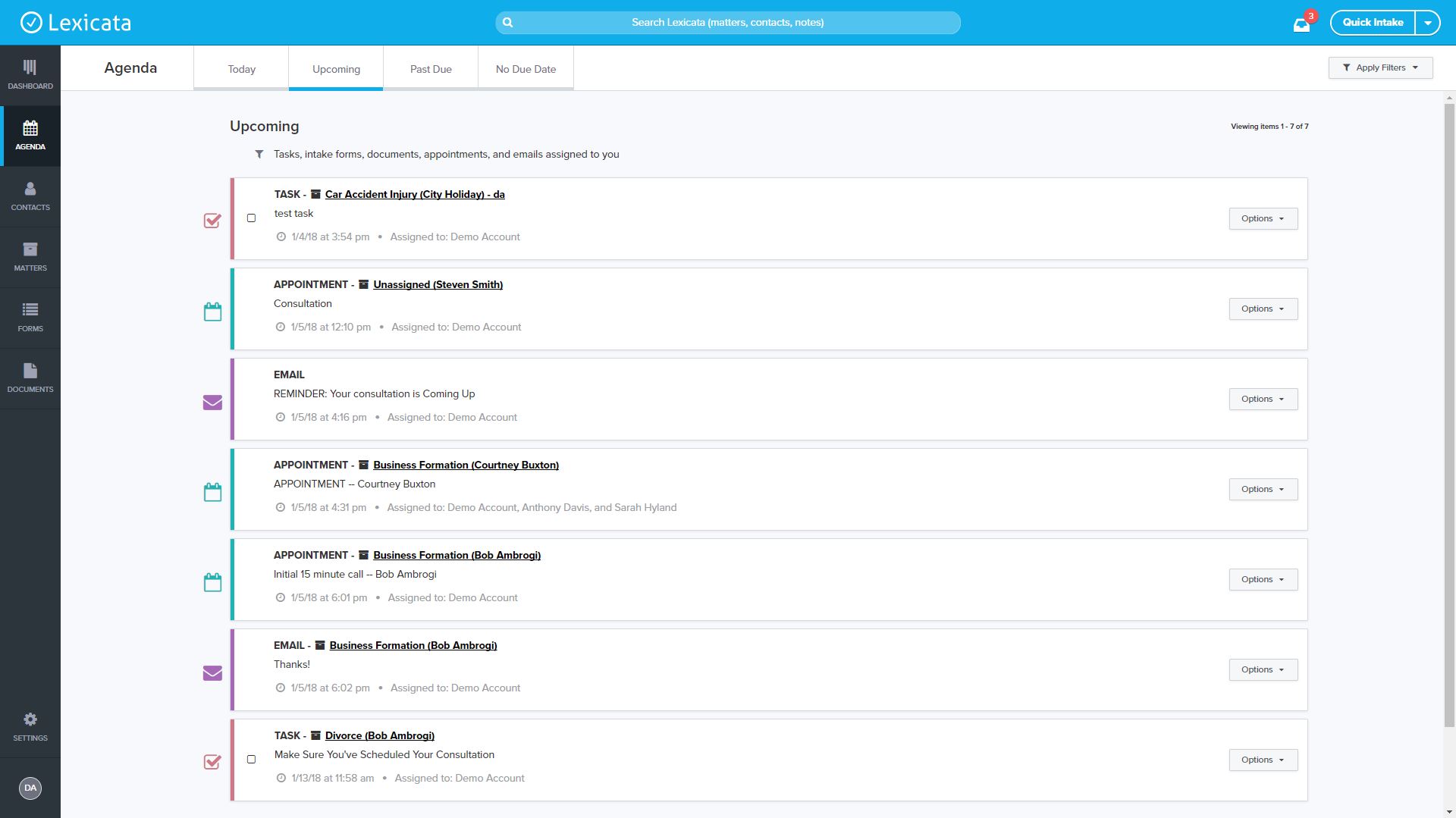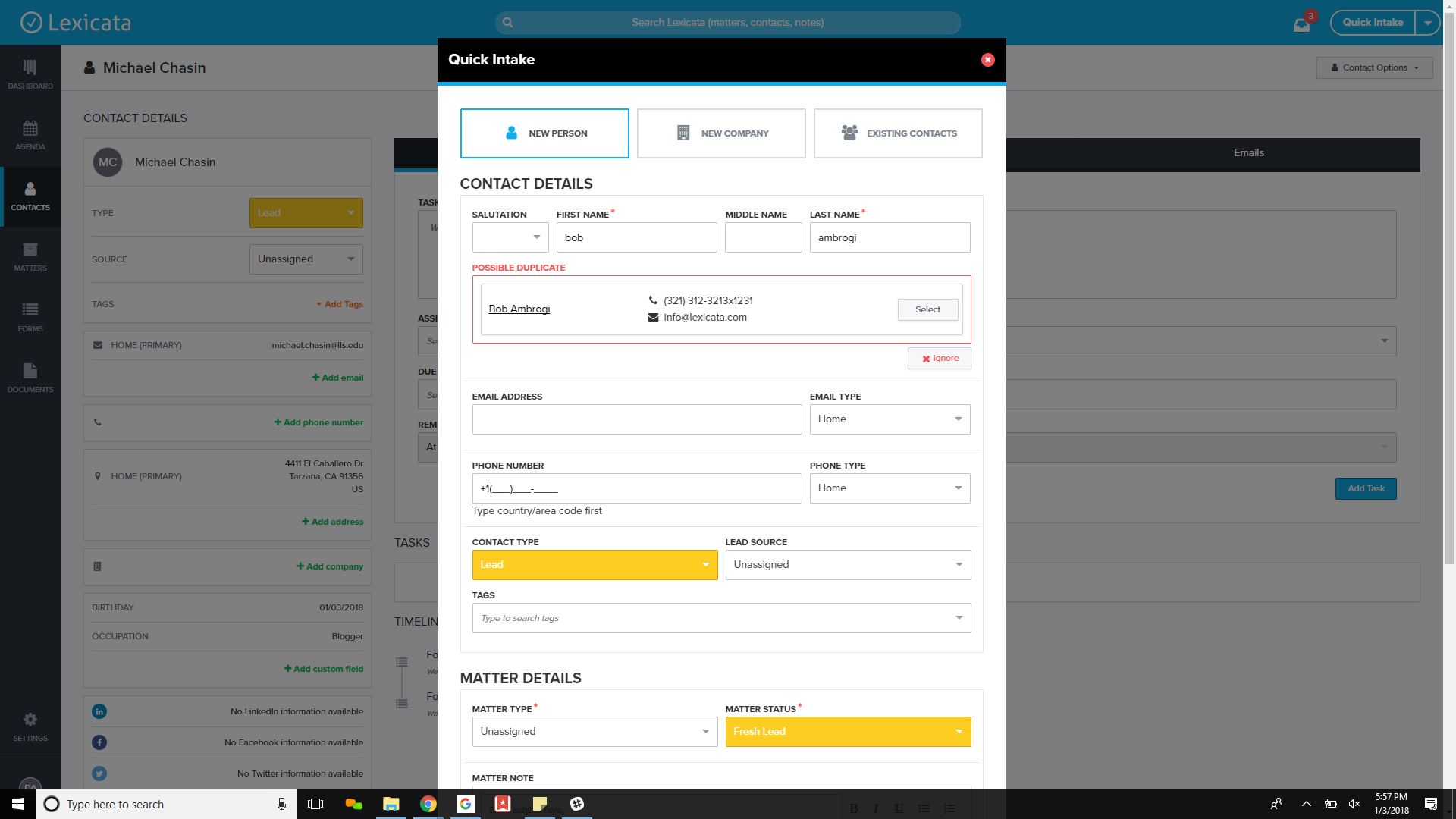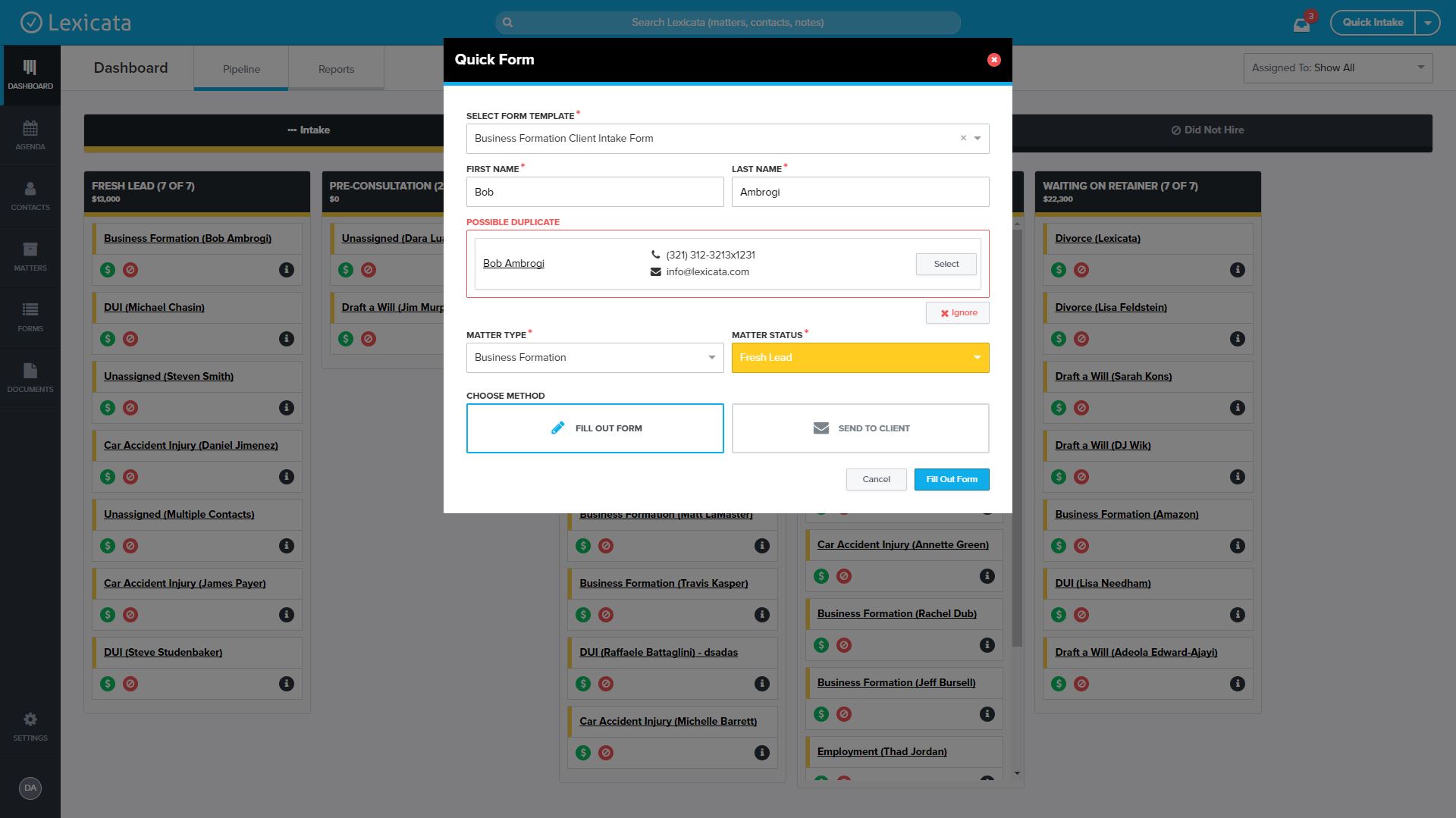Lexicata, the cloud-based client-intake and CRM (client relationship management) system for lawyers, is today releasing a major update, with new features, enhanced usability on mobile devices, and a refined user interface that enhances speed and user experience.
I first reviewed Lexicata in 2015, when it was still in beta. Since then, it has continued to add features and integrations, and it has long integrated with practice management platform Clio.
Earlier this week, Michael Chasin, Lexicata’s founder and CEO, walked me through the update, which the company is calling Lexicata 3.0. Here are some of the key changes.
New Page Layout
The placement and design of navigation menus have been changed to provide more screen real estate. Previously, Lexicata’s pages had collapsible navigation menus on the left of the screen, with sub-navigation links nested within those menus. Now, the left navigation menu is simplified to link only to each section of Lexicata (Dashboard, Agenda, Contacts, Matters, Forms and Documents), and then subnavigation is provided using tabs across the top of each section.
The new design is also more responsive to provide a better viewing experience on mobile devices.
New Matter Page
The Matters page has been redesigned with a cleaner layout and easier navigation aimed at showing all details related to a matter on one page. (See the old and new pages above.) One notable addition is that contacts related to the matter are now shown directly on the matter page. Users can edit contacts from the Matter page and also add tags to contacts.
What were formerly checklists in Lexicata are now called Workflows. Users can create workflows for a matter by simply selecting to-do items and adding them. The new interface provides more information about each item than was available in the prior version.
Also improved on the Matter page is the timeline. The timeline provides a history of everything that has happened on a matter or that is scheduled to happen, in reverse chronological order. With this update, the timeline is now broken down into upcoming items and past items.
User Signer Feature
In the prior version of Lexicata, only contacts could e-sign documents, which made it difficult for a system user to countersign after the contact (typically the client) had signed. It also prevented assigning an e-signature task to another user at the firm.
Lexicata 3.0 addresses this by allowing “user signers” in addition to client signers and by automatically notifying user signers by email when it is their turn to sign a document. This is useful for users who do not want to sign retainer agreements until after the client signs.
Now, for example, when you send out a document for signature, it will first go to the client to sign. Once the client signs the document, the user gets an email notice that the document is ready for the user to sign.
New Agenda Page
The Agenda page has been rebuilt from the ground up to provide users with an enhanced ability to see and filter their agendas. The agenda page starts with the current day’s agenda, showing any scheduled tasks, appointments, emails and documents. From there, users can also view their upcoming agenda, any past due agenda items, and any items with no due date.
The agenda can now by filtered by item type and user, so that a user can see, for example, only appointments for a particular user within the firm.
Quick Intake
The Quick Intake feature has been improved to enable it to be used with clients already in the Lexicata system. It was originally designed to be used as a quck way of intaking new clients, but users wanted the ability to use it for quick intake of a new matter for an existing client. Now it allows you do that.
In addition, it now includes duplicate-contact search. When a user begins to add a new client using Quick Intake, it automatically alerts you if you already have someone in the system with the same name. It shows you the duplicate’s name, phone number and email address so you can verify it is the same person. If so, click Select and it will take you to the existing contact’s page.
One other enhancement to Quick Intake is that it now includes the ability to add tags to intake items.
Quick Form and Quick Appointment
Previously in Lexicata, it was a two-step process to either create an intake form or schedule an appointment and also create a new matter for the intake. Now, a Quick Form feature allows the user to simply enter a name and choose a form, and then either go directly to the form (to complete it immediately) or have the form emailed to the client.
Similarly, the Quick Appointment feature lets the user create an appointment and a matter for the same contact from the same screen.
Easier Notes
Notes related to a matter can now be created simply by clicking on the Notes tab. The user is taken directly to the note entry screen. Also new in notes is the ability to add formatting, bullets and numbered lists.
More to Come
Additional updates are scheduled for throughout this year, Chasin told me. Next up, in March, will be a referral tracking feature to allow firms to better track referral sources and generate reports on those sources.
 Robert Ambrogi Blog
Robert Ambrogi Blog


